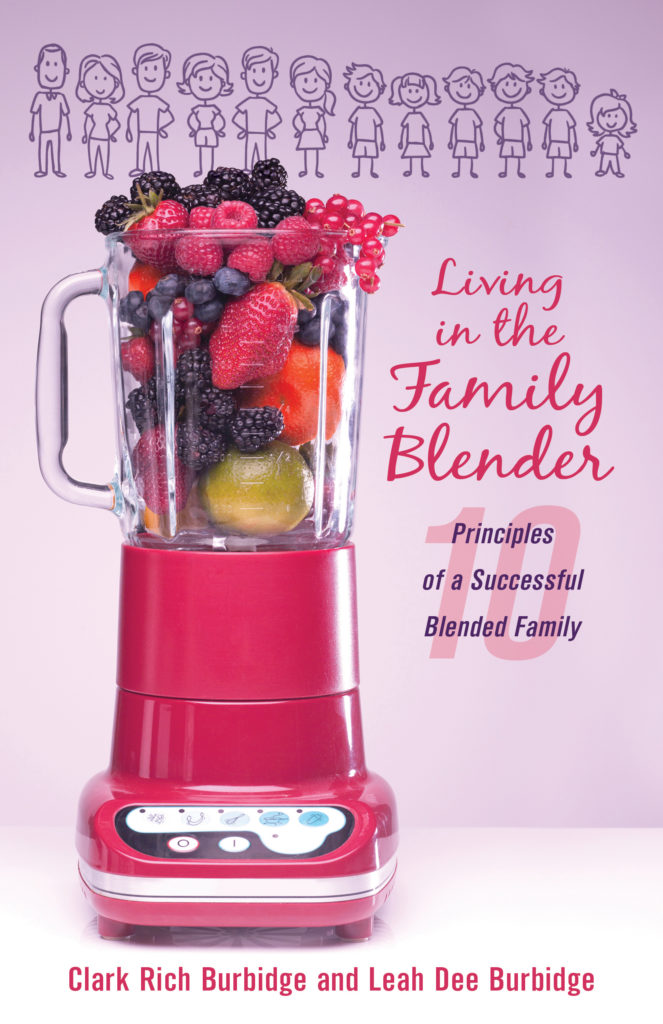
By Clark Rich Burbidge and Leah Dee Burbidge
This phrase has been heard in most blended families at one point or another.
When we were married in 2005, there was scant practical literature ‘How To” addressing the challenges faced in blended families. In addition, it was an uncomfortable public topic.
The conversation inevitably turned toward one’s personal story, an awkward subject at best.
We’ve learned a few things in the trenches since then and are thrilled to discuss one the most basic principles of long-term success…developing effective cross-border communication.
In doing so, we borrow heavily from our new book on this topic.
Start from where each child is. Most blended family members have experienced the dislocation of absence, divorce or death.
The associated trauma is real.
Remarriage can produce additional disruption due to relocation, separation from support groups, re-establishing social structure, sharing space with strangers and new parental and sibling relationships among countless others.
The key to communication is often found in where parents begin. Spend time listening to understand each child. Knowing better where each child is, and how they perceive their new reality, sets the stage.
You cannot progress from where you think/expect a child should be or where they are supposed to be. Starting from where a child IS NOT ensures daily feelings of inadequacy and failure. A parent must begin from where that child is. This is usually different for each child.
However, when you begin from where they are, every step is a success. Why? Because you are experiencing it with them as your relationship grows naturally from the new soil in which you are both planted.
Respect the Bio-Compass. There is usually a deep pre-existing relationship between the bio-parent and their child. The non-bio parent may be a fantastic person and have a developing bond with the non-bio-children, but it takes time and may never be the same.
That is both normal and okay. The non-bio parent will have opportunities for positive interaction but there will be times when only the bio-parent can respond. Recognizing these and being willing to take a step back while the bio-parent leads is a learned skill and a gift to your children. This often requires a parent to swallow their pride and remain selflessly silent in the moment.
This does not mean withdrawing. In fact, it requires that the less involved parent actively support and sustain the bio-parent. Rest assured that, as you respect this relationship, it will be noticed.
There will come a time when your input is sought.
Misdirection works. We have discovered over the years that the best response to a child’s dramatic or traumatic moments is not the frontal assault. Here are three more effective approaches.
First, progress is often better realized not in the moment when emotions are high. A better time will always become available. Second, distraction works. If two of your children argue over a particular toy, work together and get them separately interested in something else. As they grow older it is more likely to involve mean kids, perceived unfairness, disappointment in school or social feedback or falling short in achieving a goal or dream. It never hurts to turn the conversation in another direction.
Finally, when tough conversations or discipline are necessary, we often tell the end first. None of our children like to be asked to join mom and dad in the study.
They know what that means. We have found that the best way to help them focus, rather than waiting with anxious distraction for the other shoe to drop, is to start the conversation with, “We want you to know we are not mad.” Or “…you are not in trouble.” This relieves pressure and allows more effective learning.
The key trait for blended family success. One evening a teenage son came to us asking about the most important trait he should look for in friends and ultimately a spouse.
We let him name several then made one addition to his list…Kindness. We have discovered in blended family relationships or choosing a spouse, friends or mentors that kindness is always near the top of the list. Kindness opens the door to all other virtues.
If a person is kind, they will more likely be patient, honest, thoughtful, respectful, selfless and able to love unconditionally. We teach and expect such traits to be exhibited by each child and try to consistently provide appropriate examples.
While we often feel painfully imperfect, we celebrate each step of the journey. Our blended symphony encourages each instrument its solo voice. But we also recognize that beautiful music created together is something more than what could have been produced individually.
If we can do it from where we started, anyone can. Each blended family member is good enough to make a priceless contribution.
About the Authors: Clark and Leah Burbidge are 14 years into their blended family experience and loving life more than ever with ten children and their eight spouses, eight grandchildren and counting. Their practical ‘autobiographical/how to’ guide is contained in a new Gold Medal award winning book, Living in the Family Blender: 10 Principles of a Successful Blended Family, July (2019 – Deep River Books.)

